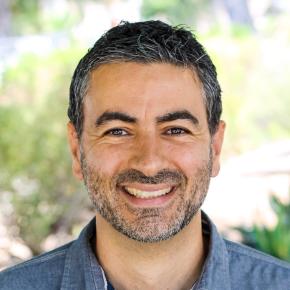Most of the world seems to believe that same-sex attraction can’t be changed. I believe this is a myth.
I attended the NARTH (National Association for Research & Therapy of Homosexuality) annual convention in Phoenix a few weeks ago and learned a lot about the current state of research helping people with unwanted same-sex attraction (SSA). I’m not a therapist of any sort, but I go almost every year to keep abreast of the work being done in this field.
It turns out that not only is sexual orientation fluid, but many instances of change occur without any therapy or intervention. For example, a study from the Archives of Sexual Behavior found that 68% of 15 year-olds with same-sex attraction had opposite-sex attraction (OSA) by the age of 21.* Again, these changes occurred spontaneously.
It’s interesting to note that sexual identification appears to be most fluid during these teenage years, precisely when youth are most likely to be affirmed by the culture as “gay.” Yet what we find is that it’s more likely that they will naturally fall back to predominately OSA within a few years.
Another highlight of the conference was to learn how clinicians have improved the effectiveness of therapy. By complimenting their therapy with new modalities used to treat other psychological symptoms, they are now able to achieve results more quickly.
In fact, some of the clinicians I spoke to said that if a person with unwanted SSA enters therapy, they expect them to experience change in their attraction. If they don’t see results, then either the therapist is missing something or the client is not following through on their end. The point is that they are finding a high rate of success helping people reduce their unwanted SSA.
Just to be clear, the therapists I spoke with are not saying that it’s easy to achieve success or that everyone is able to change. It’s hard work. Nor are they suggesting to force therapy on anyone. In fact, they believe in client self-determination and pursuing the client’s goals. They often treat gay men and women for other kinds of psychological symptoms with no intent to alter their SSA.
Another point of clarification is that categorical change (from exclusive SSA to exclusive OSA) is relatively rare, but it does occur. NARTH clinicians (and their clients) see change occur along a continuum, where many of those with unwanted SSA achieve major and sustained shifts in their sexual attraction that they find satisfying. These people begin with exclusive or dominant SSA and end with dominant OSA. Most importantly, they experience significant degrees of satisfaction because they find that their OSA is more congruent with their values or life goals.
Those who deny that change is possible often have unrealistic expectations for what constitutes genuine change. Their standard seems to be a categorical 100%-gay-to-100%-straight change. Anything short of that is failure. The instant a former homosexual experiences even a hint of a homoerotic thought, they’re branded a backslider, a faker, or an ex-ex-gay. This is unrealistic, though, and isn’t consistent with the measures of success for other therapies. As I wrote in my book, “People being treated for depression still feel depressed at times. Others fail entirely. That doesn’t mean depression can’t be treated. The same is true with other psychological conditions like bipolar, obsessive compulsive disorder, etc.” In other words, genuine change occurs along a continuum.
I suspect that many people are skeptical of this report and that’s understandable. To be honest, I’ve been following this field for more than a decade and I was surprised. It’s rare to hear this kind of success, even in Christian circles. It’s possible, though, that one reason for this is that sexual orientation change efforts (SOCE) constitute a broad range of therapies. From what I can tell, many clinicians at this conference specialize in a particular type of therapy that has proven more effective than others. An even smaller group are combining modalities to their therapy to be more efficient. That’s why you might hear of people attempting SOCE but finding that rate of success to be extremely low. It could be that they are pursuing religiously mediated change or other therapy methods that aren’t necessarily used by NARTH’s clinicians.
Either way, it seems the claim that change is impossible is a myth. Not only does therapy help men and women with unwanted SSA, it’s becoming more effective.
That’s a problem for the gay rights narrative. If homosexuals can change, then this casts doubt that homosexuality is an inborn, immutable trait. If homosexuals can change, it will be hard to draw a parallel between sexual orientation and ethnicity. If homosexuals can change, they can no longer claim that God made them that way. Many of the arguments of the gay rights narrative will seem specious.
*Savin-Williams et al., “Prevalence and Stability of Sexual Orientation Components during Adolescence and Young Adulthood,” Archives of Sexual Behavior, 2007.

